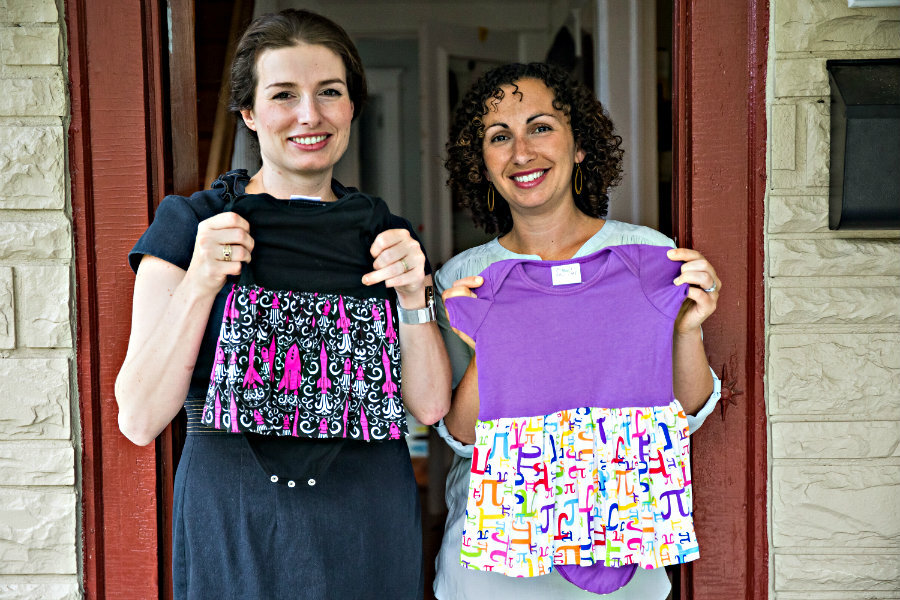Will gender-specific children's clothes soon be a thing of the past?
Loading...
Are pink T-shirts for boys or girls? Is there a gender-neutral sartorial option?
A growing number clothing companies are letting parents choose gender-neutral options, the Associated Press reports, as some developmental psychologists caution that gendered items can have an influence on the way children view themselves and others, CNN reports, even shaping choices well into adult life.
“Clothing isn’t trivial,” says historian Jo Paoletti, author of the 2012 book "Pink and Blue: Telling the Boys from the Girls in America," in a phone interview with The Christian Science Monitor. "Clothing is a very intimate way of expressing who we are. The fact that people are becoming activists about this indicates that it is far from trivial.”
But change comes slowly, as retail stores often stick with what sells.
Dr. Paoletti tells the Monitor that deeply gendered children’s items (such as pink shirts with rainbows for girls, or green truck-themed clothing for boys) became more popular as family sizes grew smaller. Manufacturers needed a way to sell new items. Gendered clothing and nonadjustable bicycles, for example, force parents to buy new items for each child.
“Gendered clothing implicitly shapes children's attitudes,” professor of psychology and author of "Parenting Beyond Pink and Blue: How to Raise Children Free of Gender Stereotypes" Christia Spears Brown tells the Monitor, “it tells them that boys and girls are drastically and inherently different from each other.”
And that message, in turn, shapes the way that kids see their own opportunities and abilities, Dr. Spears Brown says in a phone interview. Research shows that focusing on these differences can lead children to see each other in certain roles – boys in leadership roles, for example, and girls in sweeter and more nurturing roles.
Creating the image that boys ought to be rough and tumble and girls are meant to be rule following is not just negative for girls, Spears Brown says. Parents, particularly those who are more conscious of the spectrum of gender identity, don't like it.
Some parents are rebelling against gendered marketing for children, saying that they want choices that mimic the options that adults have when making purchases. Most clothing for adult women isn’t pink or sparkly; parents are asking, 'why that should be the only option available for their daughters?"
Some clothing manufacturers, the Associated Press reports, are responding. Larger retailers such as Lands End and Target are taking small steps to offer children more neutral choices, whereas niche clothing retailers such as Jessy & Jack and Princess Awesome give kids the choice to wear dresses patterned with trucks, or unisex T-shirts.
But marketing and child development experts differ on what they see as the future of gender-neutral children’s clothing.
“I do think that gender-neutral clothing will become more mainstream,” says Spears Brown. “Parents are recognizing more and more that their children are unique individuals, with their own interests that may not fit into stereotypical norms, and their clothes should reflect that.”
But Ohio State University marketing professor Shashi Matta says in a phone interview that he does not foresee gender-neutral clothing becoming mainstream. People find comfort in stereotypes, he says, and those stereotypes allow marketing experts to set expectations for a product without having to explain exactly why the customer should want it.
“Money is made from banking on stereotypes,” says Dr. Matta, “advertisers have to tell a compelling story in a short period of time. Using stereotypes allows them to do so without creating a long backstory.”
Likewise, J. Michael Weber, Associate Dean of the Stetson School for Business and Economics at Mercer University, says that while gender-neutral clothing is a trend, he foresees it as being primarily popular on the East and West Coasts, rather than mainstream throughout the country.
“Gender neutral or gender fluidity will become mainstream as a social concept, but gender-neutral fashion will remain a relatively small sub-segment of the fashion industry,” Dr. Weber adds by email. “Moving forward, parents will enjoy having the choice of gender-neutral clothes for their children, but a majority of the market will still prefer dressing girls in pink and boys in blue.”






